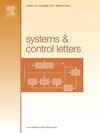神经算子在旋转钻井系统双曲型偏微分方程反步控制中的应用
IF 2.5
3区 计算机科学
Q3 AUTOMATION & CONTROL SYSTEMS
引用次数: 0
摘要
设计偏微分方程(PDEs)的控制器,如反步控制器,需要将系统模型函数映射到增益函数。这些映射涉及无限维非线性算子,通常通过带空间变量的偏微分方程定义。对于PDE的每一个新系数,必须通过求解这些复杂方程来确定相应的增益函数。然而,这一挑战可以通过使用神经算子来有效地学习和近似映射来解决。在此背景下,本文重点研究如何稳定油井钻井系统中由钻头粘滑行为引起的扭转振动,这种扭转振动可以用阻尼波动方程来描述。为此,将二阶扭转振动动力学转化为2×2一阶偏微分方程耦合系统。在此公式的基础上,我们验证了从植物PDE系数到核PDE解的映射的连续性,并表明DeepONet近似近似地反映了精确的核PDE。此外,我们证明了deeponet近似增益确保系统稳定,有效地取代了精确的反演增益核。理论证明和仿真结果验证了该方法的稳定性。本研究扩展了Toumiet al.(2017)的工作。本文章由计算机程序翻译,如有差异,请以英文原文为准。
Neural operators in backstepping control for hyperbolic partial differential equations (PDEs) in rotary drilling systems
Designing controllers for partial differential equations (PDEs), such as backstepping controllers, requires mapping system model functions into gain functions. These mappings involve infinite-dimensional nonlinear operators, typically defined through PDEs with spatial variables. For each new coefficient of the PDE, a corresponding gain function must be determined by solving these complex equations. However, this challenge can be addressed by employing a neural operator to learn and approximate the mapping efficiently. In this context, this paper focuses on stabilizing torsional vibrations caused by bit stick–slip behavior in oilwell drilling systems, which are described by a damped wave equation. To achieve this, the second-order torsional vibration dynamics are transformed into a coupled system of first-order PDEs. Building on this formulation, we verify the continuity of the mapping from the plant PDE coefficients to the solutions of the kernel PDEs and show that a DeepONet approximation closely mirrors the exact kernel PDEs. Furthermore, we demonstrate that the DeepONet-approximated gains ensure system stabilization, effectively replacing the exact backstepping gain kernels. The stabilizing capability of the proposed approach is supported by theoretical proofs and validated through simulation results. This study extends the work by Toumiet al. (2017).
求助全文
通过发布文献求助,成功后即可免费获取论文全文。
去求助
来源期刊

Systems & Control Letters
工程技术-运筹学与管理科学
CiteScore
4.60
自引率
3.80%
发文量
144
审稿时长
6 months
期刊介绍:
Founded in 1981 by two of the pre-eminent control theorists, Roger Brockett and Jan Willems, Systems & Control Letters is one of the leading journals in the field of control theory. The aim of the journal is to allow dissemination of relatively concise but highly original contributions whose high initial quality enables a relatively rapid review process. All aspects of the fields of systems and control are covered, especially mathematically-oriented and theoretical papers that have a clear relevance to engineering, physical and biological sciences, and even economics. Application-oriented papers with sophisticated and rigorous mathematical elements are also welcome.
 求助内容:
求助内容: 应助结果提醒方式:
应助结果提醒方式:


